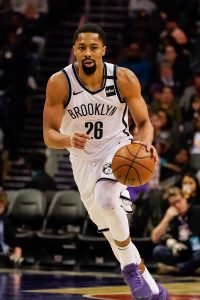While some games in the NBA’s play-in tournament have been a little more exciting than others, the end result of all four has been the same so far: the higher seed has advanced.
That means we’ve got a pair of No. 8 vs. No. 9 matchups on tap, with the final playoff spot in each conference on the line, starting on Thursday night with the Eastern Conference….
Indiana Pacers (9) at Washington Wizards (8)
Given the way the last month of their respective seasons played out, the red-hot Wizards looked like a safe bet to earn a playoff spot, while the inconsistent, injury-plagued Pacers seemed to be a candidate for an early exit. But Washington couldn’t knock off Boston on Tuesday, and a shorthanded Indiana squad dominated Charlotte, setting up an elimination game between the two teams for Thursday.
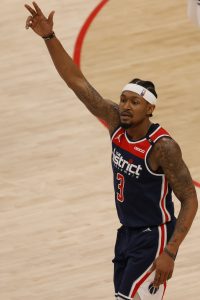 Bradley Beal and Russell Westbrook fueled the Wizards’ 17-6 finish to the season, but neither player looked quite like himself on Tuesday. Beal, still bothered by a hamstring injury, scored 22 points on 10-of-25 shooting, a subpar night by his lofty standards. Westbrook was worse — after averaging a monster line of 23.0 PPG, 14.0 APG, and 13.5 RPG in Washington’s final 23 games, he shot just 6-of-18 on Tuesday and had nearly as many turnovers (4) as assists (5).
Bradley Beal and Russell Westbrook fueled the Wizards’ 17-6 finish to the season, but neither player looked quite like himself on Tuesday. Beal, still bothered by a hamstring injury, scored 22 points on 10-of-25 shooting, a subpar night by his lofty standards. Westbrook was worse — after averaging a monster line of 23.0 PPG, 14.0 APG, and 13.5 RPG in Washington’s final 23 games, he shot just 6-of-18 on Tuesday and had nearly as many turnovers (4) as assists (5).
To advance on Thursday, the Wizards will need more from their two backcourt stars and from $80MM man Davis Bertans, who missed all seven of his 3-point attempts on Tuesday and was a game-worst minus-23.
As for the Pacers, even without key players like Caris LeVert, Myles Turner, and T.J. Warren available, they put up 144 points in their win over Charlotte. But the Hornets had backed into the play-in tournament, losing 15 of their last 21 games of the regular season, and were dealing with injury absences of their own, including standout forward Gordon Hayward. Indiana will face a more difficult challenge on Thursday and will no longer benefit from home-court advantage.
What do you think? Will the Wizards or Pacers win on Thursday and clinch the East’s No. 8 seed?
Which team will secure the No. 8 seed in the East?
Washington Wizards
63.05%
(413 votes)
Indiana Pacers
36.95%
(242 votes)
Total Votes: 655
Trade Rumors app users, click here to vote.
Memphis Grizzlies (9) at Golden State Warriors (8)
The Warriors defeated the Grizzlies on the last day of the regular season to earn the No. 8 seed in the play-in tournament. On Friday, just five days later, they’ll be looking to repeat that result to clinch the No. 8 seed for the playoffs.
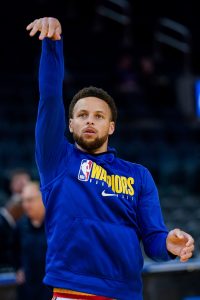 Although the Warriors couldn’t pick up a win on Wednesday, their performance against the defending-champion Lakers showed why they’ll enter Friday’s game as the favorites. The Dubs held the Lakers to 40.7% shooting and led for most of the night, but a miracle LeBron James three-pointer broke a tie in the game’s final minute.
Although the Warriors couldn’t pick up a win on Wednesday, their performance against the defending-champion Lakers showed why they’ll enter Friday’s game as the favorites. The Dubs held the Lakers to 40.7% shooting and led for most of the night, but a miracle LeBron James three-pointer broke a tie in the game’s final minute.
Stephen Curry and Andrew Wiggins, who combined for 58 of Golden State’s 100 points on Wednesday, may need a little more help on Friday, but the fact that Los Angeles couldn’t slow down Curry (37 points on 12-of-23 shooting) even with so much defensive attention on him is an encouraging sign for the Warriors.
The Grizzlies shouldn’t be ruled out, however. While the final score in Wednesday’s 100-96 win over San Antonio was close, Memphis dominated the minutes that Ja Morant (+20) and Jonas Valanciunas (+26) played and figure to lean heavily on that duo again on Friday.
The Grizzlies’ chances of hanging with Golden State and pulling off the upset hinge not only on Valanciunas’ ability to punish the Warriors inside like he did the Spurs (23 points, 23 rebounds), but on Memphis’ ability to play good defense while the veteran center is on the court. In Sunday’s loss, Valanciunas racked up 29 points and 16 boards, but the Grizzlies posted an awful 127.0 defensive rating during his 36 minutes.
What do you think? Will the Warriors or Grizzlies win on Friday and lock up the No. 8 seed in the West?
Which team will secure the No. 8 seed in the West?
Golden State Warriors
80.49%
(796 votes)
Memphis Grizzlies
19.51%
(193 votes)
Total Votes: 989
Trade Rumors app users, click here to vote.
Photos courtesy of USA Today Sports Images.
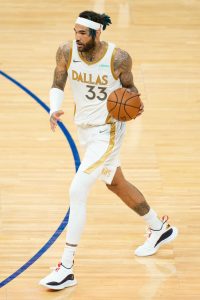
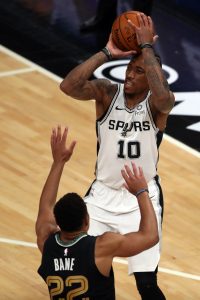

 Although the Warriors couldn’t pick up a win on Wednesday, their performance against the defending-champion Lakers showed why they’ll enter Friday’s game as the favorites. The Dubs held the Lakers to 40.7% shooting and led for most of the night, but a miracle
Although the Warriors couldn’t pick up a win on Wednesday, their performance against the defending-champion Lakers showed why they’ll enter Friday’s game as the favorites. The Dubs held the Lakers to 40.7% shooting and led for most of the night, but a miracle 